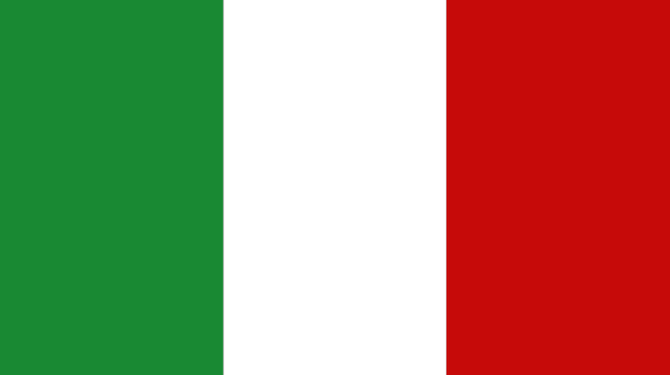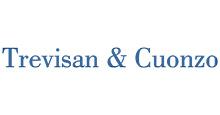
Italy
Fashion Law
This chapter is from the first edition of the Law Over Borders Fashion Law guide. To read the fully updated chapter from the latest edition click here.
Introduction
The fashion industry in Italy generates over 80 billion Euro (8.5% of the manufacturing industry) and employs almost 500,000 people (12.5% of the workforce). In the period from 2019 to 2021 the fashion industry saw a steady and considerable growth, reporting an 8% increase in 2021, doubling the estimate based on previous years. Aside from the most notable high-end luxury brands, small and medium enterprises (SMEs) still constitute the majority of the operators in the field.
1 . What are the main intellectual property legal tools available to protect fashion products?
Italian and European regulations grant specific tools to protect Intellectual Property Rights (IPRs) in the fashion industry. Trademarks, designs and copyright protection are among the most important fashion-related IPRs. The following overview describes the most common features protected, as well as a table summarising the additional rights available: patents, trade secrets, and domain names protection.
1.1. Trademarks and non-traditional trademarks
According to Articles 12, 13 and 14 of the Italian IP Code, which reflect the provisions set forth by European Union Trademark Regulation (EUTMR), a trademark has to meet the following requirements: novelty, distinctive function, and lawfulness. The registration is valid for 10 years and is renewable an unlimited amount of times. The sign must be effectively used within the first 5 years of registration and its use must not be discontinued for more than 5 consecutive years, in order to avoid cancellation actions for non-use. In Italy, it is possible to register defensive trademarks (i.e. trademarks that are not actually used by the owner but are similar to the main trademark and exist with the sole purpose of preventing third parties from registering signs that are confusingly similar). These defensive marks must be registered at the same time as the main trademark and must not vary excessively from the core (the so called “heart”) of mark concretely used.
Provided that these requirements are met, there are also a number of “non-traditional” trademarks worth mentioning for the fashion industry:
Colour mark. According to Italian case law the registration of a colour mark requires:
- the identification of a recognised colour code (Pantone); and
- that its use:
- is not imposed by the nature of the product or necessary to achieve a technical result or so as to confer a substantial value to the product; and
- is completely detached from an ornamental function.
Position mark. This relates to the specific method of placement or application of the sign on the product. In the Adidas Case C-145/2014, the European Court of Justice (ECJ) held that both the distinct position and the specific number of stripes could be considered sufficient elements to avoid any risk of confusion.
Shape mark. Under Articles 9 Italian IP Code and 7(e) EUTMR, signs, which do not consist exclusively of the form imposed by the nature of the product, or the necessary form to obtain a technical result, or the form which gives substantial value to the product, are registrable as trademarks.
Black/White mark. Currently, the protection of black and white (or grayscale) marks is extended to colour variations. This does not apply when the colour plays a crucial role in the distinctive character of the sign.
Pattern mark. This consists of simple geometric shapes or designs commonly applied to the surface of products, capable of identifying their origin.
“Made in”. The “Made in Italy” trademark is associated with products that are, for the most part, designed and assembled in Italy (Italian decree n. 135/2009). The label should highlight the origin of each production phase and guarantee traceability. The “Made in Italy” mark can be applied to products sold on the Italian market and only in the event that at least two production phases took place in Italy and the remaining are traceable.
Unregistered mark. Its use grants per se some exclusive rights limited to the use that is already made of the sign (Art. 2571 Italian Civil Code) and under certain circumstances it can prevent third parties from using an identical/similar sign for identical/similar goods and/or services (Art. 12(b) Italian IP Code).
1.2. Design as an alternative or addition to TM registration
The design work is mainly regulated by the Italian IP Code (Articles 32-44) and CE Regulation no. 6/2002. Both two-dimensional drawings and three-dimensional models – with a particular aesthetic shape – fall within this category. They are distinguished by: colours, lines, shapes, and materials used, provided that they are new, lawful, and have individual character. Different products in the fashion industry, such as decorations or drawings reproduced on fabrics, 3D models of bags, jewellery, watches, or sunglasses but also clothing can sometimes be protected by design rights. Once a design is registered, it can be used exclusively by the owner for 5 years (renewable and extendable up to a maximum of 25 years).
1.3. Copyright as an alternative or addition to TM registration
Copyright law is regulated by Italian Law no. 633/1941 and grants the right to exclusive economic exploitation of creative works from the moment of their creation until 70 years after the creator’s death. In the fashion industry drawings and sketches could be protected by copyright provided that the creations are new, have artistic value, and have creative character.
1.5. Summary of additional IPRs
| IPR | Duration | Time and modalities for grant | Pros and cons in the fashion sector |
| Patents | 20 years (non-renewable). | Filing of the application before the IPTO Office (UIBM). Grant in about 24-36 months from the filing of the application. | Pros: a strong 20-year exclusivity on the market. Cons: novelty and inventive step requirements are difficult to meet (accessories and fabrics may be patentable products). |
| Trade secrets | Unlimited, unless disclosed. | Automatic protection pursuant to Art. 98 Italian IP Code provided that the information is:
| Pro: potentially unlimited and “free” protection of the information. Cons: it does not protect the information from reverse engineering or lawful disclosure. |
| Domain names | 1 year (renewable without any limits). | Purchase through recognized channels. Grant based on availability on purchase. | Pro: essential for online visibility and brand awareness. Cons: unavailability of desired domain name once already registered by others. |
2 . Beyond intellectual property: what contractual arrangements are useful in manufacturing, distributing and advertising fashion products?
The fashion industry and its production line encompass a wide variety of contractual agreements. Below is an overview of the main elements of the most relevant agreements.
2.1. Manufacturing fashion products
License agreements and Non-Disclosure Agreements (NDAs). Through this type of agreement the owner of the IPRs can license use to a third party upon payment of a consideration, without transferring ownership. Since these licenses involve trademarks, know-how, designs and patents (all highly valued assets for a fashion house), a key instrument in drafting this type of agreement, aside from clearly identifying ownership and use of the IPRs, is the signing of a Non-Disclosure Agreement (NDA).
An NDA is an agreement by which the undersigning parties undertake not to disclose and to maintain the confidentiality of classified information exchanged during the contractual relationship. It will always include clauses relating to applicable law, jurisdiction and/or arbitration, penalties for disclosure, duration and language.
Subcontract agreements / in-house manufacturing. Subcontract agreement (sub-fornitura) regulated by Italian Law n. 192/1998, specifies that a contractor undertakes to carry out work on behalf of a client on semi-finished products or raw materials supplied by the client, or undertakes to supply the client with products or services to be incorporated or otherwise used in the economic activity of the client, or, in the production of a complex product, in accordance with plans, technical and technological knowledge, models or prototypes supplied by the client. Since this contract involves the transfer and sharing of know-how and other IPRs, it is important to clearly establish how the subcontractor may use said IPRs, also providing consequences for infringement and breach of contract. The subcontractor is economically dependent and must abide by all the client’s instructions. In a nutshell, the subcontractor must provide a product that respects the project provided by the client. Unlike other forms of subcontracting (sub-appalto), the subcontract agreement (sub-fornitura) is placed within the production cycle of the client’s products.
2.2. Distributing fashion products
Agency agreement. One party (the agent) assumes on a regular basis and upon consideration, the task of promoting, on behalf of the other party (the principal), the conclusion of contracts in a specified area. The actions of the agent bind the principal to the agreements as if the principal had entered into them personally. These types of contracts must be in writing. This is a fiduciary relationship and, as such, the agent must act under the principles of loyalty and good faith. The agent must therefore abide by the rules and instructions provided by the principal. Under Italian law, any clause shifting, even partially, the responsibility for breach of the third party onto the agent is prohibited. Under the specific conditions identified under Art. 1751 Italian Civil Code, upon termination of the relationship, the principal is obliged to pay an indemnity to the agent.
Selective distribution online in high-end fashion and trademark protection. Pursuant to EU Regulation 330/2010 selective distribution consists in a “system where the supplier undertakes to sell the contract goods or services, either directly or indirectly, only to distributors selected on the basis of specified criteria and where these distributors undertake not to sell such goods or services to unauthorised distributors within the territory reserved by the supplier to operate that system”. This system is reserved for high-end products with specific characteristics. The manufacturer must specify the required standards to become a selected distributor within its network. These criteria may include quality and/or quantity standards, specific knowledge of the product as well as specific skills. As to online selective distribution, the ECJ in the Coty Germany (ECJ C-230/16, Coty Germany GmbH v. Parfümerie Akzente GmbH) case ruled favourably on the lawfulness of the contractual clause by which the manufacturer prohibited the selected distributors from selling the products through e-commerce platforms that are easily identified as not part of the network. However, the same products may be offered for sale through the “showcase sites” of selected distributors, or through third party platforms, but without the intervention of the latter being recognizable to the consumer.
Co-branding and co-marketing. Co-marketing occurs when two brands cooperate to promote products and services for which they share a common philosophy. When two brands join forces to manufacture a single product, or provide a specific service, we are dealing with co-branding. Such agreements can be instrumental in helping a brand reach a wider audience. With this goal in mind, it is important to clarify all aspects in the co-branding and co-marketing agreements such as brand positioning, marketing, royalties, and compensation for damages.
2.3. Advertising fashion products
Correctly placing a product on the market and reaching the target audience are crucial aspects to consider. The use of models to better advertise fashion products is a long established practice. However, in the last decade social media, and in particular “influencers”, have become key to having a successful fashion brand.
Employing fashion models. When collaborating with models, clearly defining the framework of their activity and the use of their image is essential. For example, during a photoshoot it is important that every model signs a release form for the use of their images and that the organizer responsible obtain a license from the photographer for the use of the photographs.
Social media, influencers and brand ambassadors/celebrities. Agreements entered into with brand ambassadors should be structured in such a way as to clearly outline the role and influence he/she/they have in relation to the promotion of the brand and its products. Aside from the compensation paid to the brand ambassador, the agreements should also contain, amongst other standard contract clauses (such as representation and warranties, jurisdiction, confidentiality, etc.), the following key clauses: “code of conduct” when promoting the products, copyright, product use and ownership, and consequences for breaches of the above. Standard practice usually dictates that the products are provided to the brand ambassador free of charge and that they cannot be subject to resale. As a final note on the copyright, the agreement may provide that the brand ambassador owns the copyright on the promotional work he/she/they create, meaning that any future use following the termination of the agreement will require the consent of the former brand ambassador. This can be particularly true when dealing with content creators who are active on social media in a specific field as well as influencers, who are more common in the fashion sector. When promoting products through social media the content creator or influencer must clearly indicate in their material that its content constitutes an advertisement and the name of the sponsor.
Advertising standards, relevant authorities and advertising practice. The Italian Advertising Standard Authority (IAP) is a private authority responsible for ensuring that marketing communications are honest, truthful, and correct. The IAP Jury is also an important instrument to challenge advertising campaigns regarded as detrimental to fair competition.
Another very helpful tool provided to fashion companies by the IAP is a preventative measure. Companies who are about to release a campaign can ask the IAP to provide a compliance opinion of the campaign with the Self-Regulatory Code for Commercial Communications.
3 . What regulations govern online marketing and how are the rules enforced?
The main concerns with e-commerce relate to tackling unlawful conduct, counterfeiting and the issues relating to selective distribution in the luxury sector.
In Italy, e-commerce is currently regulated pursuant to a number of different provisions:
- Italian Civil Code.
- Italian Legislative Decree n. 70/2003, which implemented the 2000 E-commerce Directive (B2B and B2C), and which may be impacted by the adoption of the Digital Markets Act (DMA) and the Digital Service Act (DSA).
- GDPR (EU Regulation no. 2016/679) on privacy and data protection.
- Consumer Code (B2C) and the 2020 New Deal for Consumers.
The EU DMA and DSA regulations, if implemented, will affect the current framework, especially regarding the main marketplaces (i.e. gatekeepers) setting new compliance rules.
3.1. Consumer protection regulations
The 2020 EU New Deal for Consumers aims at harmonizing and modernizing the protection of the consumers in line with the digital transformation. It comprises the following EU Directives:
- Directive (EU) 2019/770, concerning contracts for the supply of digital content and digital services.
- Directive (EU) 2019/771, concerning contracts for the sale of goods (Law No. 53 of April 22, 2021, effective as of May 8, 2021, delegates the Italian government to transpose several EU Directives among which the Directives (EU) 2019/770 and 2019/771).
- Directive (EU) 2019/2161, for the better enforcement and modernization of European Union consumer protection rules (see Article 7.1: “By 28 November 2021, Member States shall adopt and publish the measures necessary to comply with this Directive. They shall immediately inform the Commission thereof. They shall apply those measures from 28 May 2022”).
- Proposal for Directive (EU) 2020/9223, on representative actions for the protection of the collective interests of consumers.
3.2. Physical store and online store layout
In Italy, the layout of a physical concept store is protected, both as design as well as work of architecture (under Art. 2(5) Copyright Law), on the condition that they are identifiable as a whole and confer a certain degree of creator originality, such as to make them distinguishable from competitors’ store layout (Kiko vs. Wycon - Italian Supreme Court, decision no. 8433/2020 of April 30, 2020).
The website layout is not specifically protected by the Italian Copyright Law however it may, in principle, be protected as a work of architecture in the event the unique website layout fulfils the requirements provided by the law. According to Italian case law, a website may be included as a protectable work under Art. 1 Copyright Law provided that it is creative and original.
4 . What are the most relevant unfair competition rules for fashion businesses and how do the Courts interpret and enforce these rules?
Unfair competition addresses deceptive trade practices or circumstances where consumers are misled. The main applicable laws are set out in the 2020 New Deal for Consumers and Article 2598 Italian Civil Code.
Article 2598 Italian Civil Code lists three different trade practices of unfair competition:
- misleading consumers by using distinctive signs belonging to others or by imitating a competitor’s products;
- appropriating a competitor’s merits or commenting on a competitor’s products bringing them into disrepute; or
- using any other means which are not in accordance with the principles of fair conduct and are likely to damage the business of others.
This provision applies only when the parties are:
- entrepreneurs in direct competition, marketing their products;
- in the same market (i.e. they sell the products to a similar group of consumers); and
- where the products belong to the same product sector.
According to Italian case law, unfair competition also exists in a “potential scenario”, i.e. a possible extension or expansion in the future of the competing business activity (in terms of significant likelihood), and in hypothetical preparatory activities to the exercise of the enterprise. In this case, competition is assessed on the basis of three different parameters:
- Territory: the area regarding which the business can expand.
- Time: from the year of incorporation to liquidation.
- Products: similar products or substitute.
Parasitic unfair competition is one of the most common unfair practices in the fashion industry. It entails imitating a competitor’s trade practices in their entirety and implementing or imitating any of their new entrepreneurial initiatives. According to Italian case law, parasitic unfair competition can also apply when each individual product does not entirely imitate a competitor’s products and/or in the absence of likelihood of confusion. Settled case law assesses the existence of parasitic unfair competition by analysing entrepreneurial activities considered as a whole and individually. Multiple lawful acts can lead to an unlawful conduct in the event the lawful acts are connected with the clear intent to achieve an objective and undeserved competitive advantage.
The most common measures issued by Italian Courts are:
- injunction, i.e. an order instructing a person/entity to refrain from unlawful behaviour;
- withdrawal of the imitating products from the market;
- compensation for damages and/or disgorgement of profits; and
- publication of the decision in sector related press or newspapers.
5 . Is there any regulation specifically addressing sustainability or ESG (Environmental, Social and Governance) in the fashion industry?
The sustainable revolution is being led by Millennials and Generation Z, who want information on the production process, origin, and composition of the products in order to make informed choices, and who are willing to spend more to buy socially and environmentally sustainable products.
This has led to more competition among those working in the fashion industry to obtain as many labels as possible to acquire goodwill with consumers.
The sustainable revolution has also increased the awareness and relevance of Environmental, Social and Governance (ESG) issues in the fashion sector. The urgency to deal with ESG aspects is also linked to the wide diversity of the industries involved in the manufacturing of fashion products.
To provide some perspective, according to the International Energy Agency (IEA), by 2050, the textile industry alone could reach 25% of the global CO2 consumption. This largely depends on the highly fragmented nature of the sector and its supply chain, which makes the introduction of unified standards difficult.
The fashion industry reacted to the ESG issues with several initiatives, including:
- Environmental: manufacturing sustainable fabrics and materials, standardising the manufacturing, conservation and marketing procedures and obtaining environmental labels such as GOTS (Global Organic Textile Standard), Oeko-Tex, Bluesign, the Italian AIAB (Associazione Italiana Agricoltura Biologica), and PSV (Plastica Seconda Vita). By way of example, a relevant international standard frequently used in the Italian fashion industry is the ISO 14855, which establishes a time limit of 6 months within which the product’s biodegradation process must have reached at least 90%.
- Social: regulating working conditions and obtaining social labels such as Equo Garantito, Fairtrade International, Fair Wear Foundation, and Certified B Corporation.
- Governance: increasing the transparency and control of the supply chains, as well as shining a light on labour and money laundering issues.
The ‘label rush’ mentioned above and the lack of a systematic regulatory framework in the management of certifications have also led to the dissemination of false or deceptive information regarding an organization’s green environmental strategies. This phenomenon is known as ‘greenwashing’ and is defined by Art. 12 Italian Advertising Code.
6 . Customs monitoring: do any special import and export rules apply to fashion products?
In Italy, the Customs Agency plays an important role in fighting the circulation of counterfeit products by monitoring the shipments that pass through the Italian borders and/or are destined for the Italian market.
In order to activate this monitoring service a business must file with the Central Customs Office an application for action (AFA), which must include a list of the IPRs the business wishes to protect. Any IPRs not included in the AFA cannot trigger an action from the Customs Officers.
In a nutshell, when a shipment is suspected of infringing IPRs the Customs Office notifies the owner of the IPRs who has a 10-day deadline to inform the office whether the products are infringing. The deadline may be extended with prior approval by the Customs Office. After receiving the declaration by the IPR owner, the Customs Office reviews it and decides whether to seize the products and pass the case file on to the Public Prosecutor’s Office, which will manage the criminal proceedings.
The Customs Office can identify the products as:
- counterfeit (infringing a trademark or patents registered in an EU Member State and listed in the AFA); or
- pirated (infringing a copyright or related right, or a design listed in the AFA).
The disposal strategies currently in use range from open-air burning, shredding, crushing, burying in landfills, to recycling and donation to charities. In Italy, the EU Regulation 608/2013 rules regarding the destruction of counterfeit products cannot apply since they conflict with national laws regarding criminal proceedings.
7 . Frequently Asked Questions
What business model should I use?
The recommended corporate structure depends on the size of the business or enterprise. Within the Italian fashion industry there are both partnerships and Limited/Joint Stock companies, with a tendency to favour the latter. (Società per Azioni, Società a responsabilità limitata, Società a responsabilità limitata semplificata.) The main advantage of Limited/Joint Stock Companies, over partnerships, is that the individual shareholders are not liable with their personal assets for the obligations of the company. Simply put, creditors of the company may only raise claims against the assets of the company. Advantages of partnership are mainly simplified bureaucracy and accounting records and certain tax deductions for the individual partner, with the caveat that the partners are wholly liable, not only with the company assets, but also with their own personal assets.
What are the grounds for bringing an effective infringement action if our business’s innovative clothing designs are evidently being copied during the short fashion seasons?
Once you have identified products infringing your IPRs, the first step is to send a strongly worded cease and desist (C&D) letter. In the event the infringing party does not comply with the requests in the C&D letter, there are several legal avenues available depending on the specific case and the urgency of the matter.
In cases where a quick solution is required, you may file a motion for preliminary injunction. This motion may be granted both ex parte and inter partes and must fulfil two requirements:
- prima facie case: an enforceable right; and
- irreparable harm/urgency given by the matter at hand.
If these requirements are met, different measures can be granted by the court, including an injunction against the continuation of manufacturing and/or sales activities, the seizure of infringing products and their withdrawal from the market, the search of the counterfeit products (useful for acquiring evidences) and the publication of the decision.
Having an active customs monitoring application can help identify infringing activity.
Our brand is subject to online counterfeiting. What cost-effective action can we take and can we order the intermediary service provider (ISP) to take down bad faith websites selling imitation copies of our brand?
In the event you encounter the online sale of products infringing your IPRs, you should send a notice and takedown letter to the hosting provider requesting the takedown of the offer for sale due to IPRs infringement. In case of non-response of the provider, in order to obtain the same result reinforced by a penalty for non-compliance with the court order, you may file an urgent motion pursuant to Article 700 of the Italian Civil Procedure Code.
As far as the liability of the ISP, this depends on whether the provider was aware they were hosting infringing content.
As a general final remark, EU regulations on the matter are adopting measures that increase the active participation of providers in preventing the upload on-line of infringing content.
3-6 PQE Corporate M&A Associate
Job location: London
Projects/Energy Associate
Job location: London
3 PQE Banking and Finance Associate, Jersey
Job location: Jersey

 Giuseppe Verrecchia
Giuseppe Verrecchia Julia Holden
Julia Holden Martina Olivieri
Martina Olivieri Nicolò Mosiello
Nicolò Mosiello
